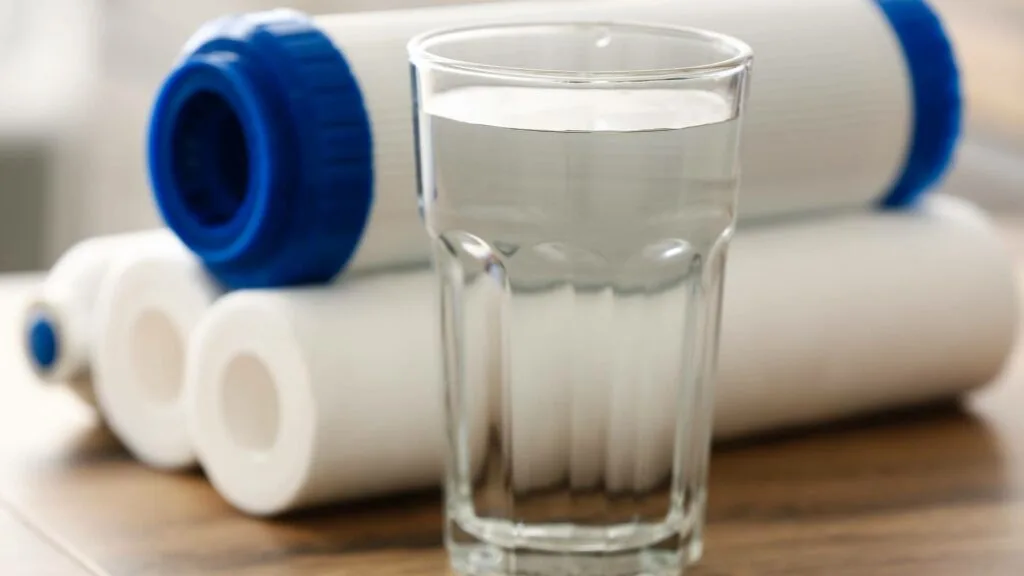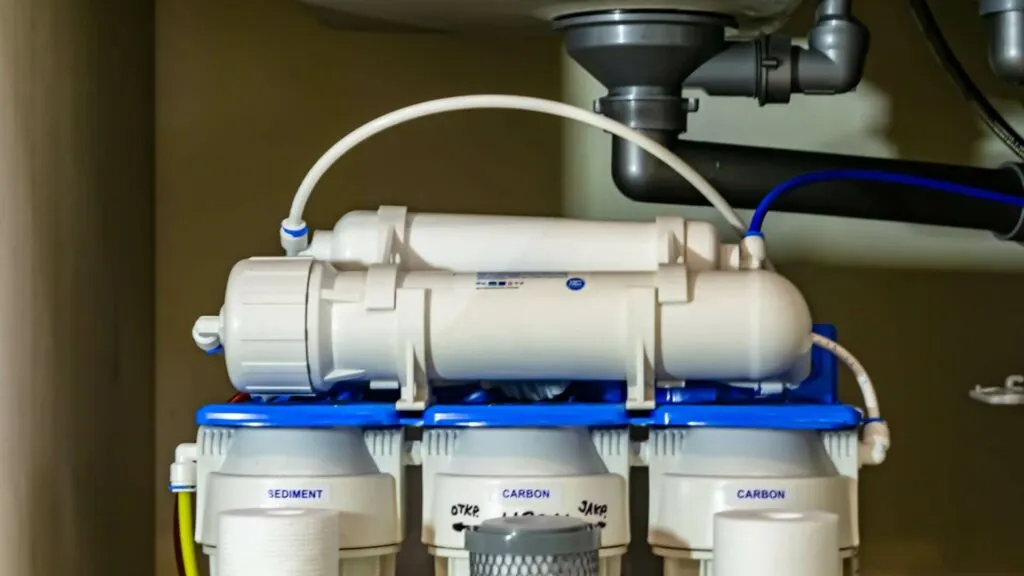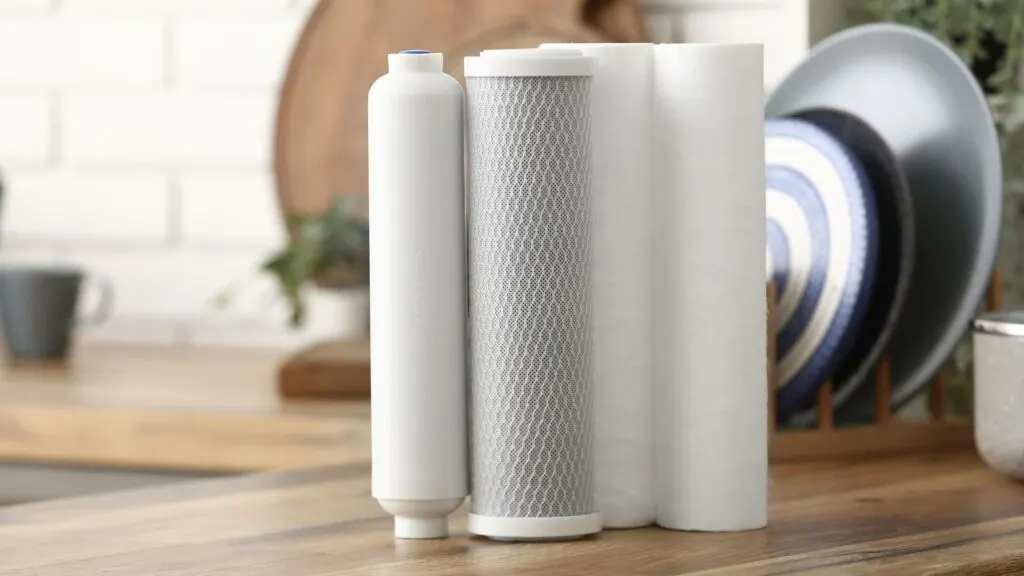Water is necessary for life, but it also has some traits that make it problematic. Notably, water is a powerful solvent, so it dissolves and brings along trace amounts of nearly everything it touches. This means that there is usually quite a bit more than H2O in our glasses and bathtubs–there could be trace amounts of nearly anything. Fortunately, there are many affordable solutions to problematic water at home; we’ll cover seven of them right here.

Install a water filter.
The first step is often the most obvious one: home water filter systems can address the most problematic water. If you have turbid or otherwise offensive water, you need to start by determining the underlying problems. The nature of your water contaminants will dictate what type of filtration setup you need. If you are on municipal water, looking up your city or county’s most recently federally mandated water quality report is a good place to start. A quick Google search will yield official government results from within the last year, pinpointing the contaminants most prevalent in your area.
For more specific information on what is in your household water, you can send a sample to a laboratory for professional testing, if you feel that your water has been compromised by more local contaminants. If you are on well water, lab testing will likely be your best option.
Once you determine what is in your water, you can begin designing a water filtration system that targets the problematic elements you face. Most home filtration setups will involve a combination of sediment filters to strain out dirt, dust, and physical particulate and activated carbon filters to remove chlorine and chemical contaminants through chemical attraction called “adsorption.” The combination of polypropylene sediment filters with activated carbon covers a lot of bases and will be sufficient for many people, especially those on fairly good city water.
Home water filtration systems can be set up in the basement or ground floor at the point where the water line enters the house (called a “point of entry” system). It can also go right before dispensing the water, e.g., under the kitchen sink (a “point of use” system). Homeowners with very hard or otherwise contaminated water will often install both, using a water softener to treat the water for the whole house, and coupling it with a reverse osmosis system under the kitchen sink for drinking and cooking water.
Use High-Quality fridge water filters
In addition to your whole-home and/or under-sink filters, a great place to get additional protection against bad flavor and lingering contaminants is in your refrigerator’s water system. Most modern fridges dispense water and ice with a built-in filter slot. The main purposes of a fridge water filter are to remove chlorine and VOCs from water and to deliver water with great taste and odor. Refrigerator filters are almost universally made with activated carbon, the most ancient and continually-used form of water filtration technology globally. Made from coconut husk charcoal, activated carbon draws dissolved organic and chemical material out of water through chemical adsorption. Using charred plant matter to improve the taste of water is counterintuitive. This trick has been known since ancient times and is still the best method for improving the taste of water.
Test water regularly
You may have an expensive filter setup, but whether or not it’s getting the job done depends on what is currently in your water, which depends on many upstream factors. Water conditions change constantly. The same city or region sometimes faces entirely new contaminant issues from one year to the next. Local agricultural, construction, or engineering projects can introduce new chemicals into watershed areas. Changing water treatment methods in the municipal system may cause an elevation in disinfection or disinfection by-product levels.
Any number of things can change the chemical content of your water. So, to ensure that your filters are addressing your water’s needs, it is advisable to test your water annually. Home pH strip tests can give you a basic idea of your water’s hardness and alkalinity. For comprehensive results, send your water to a laboratory for testing, typically costing around $100.

Use a water softener.
For an investment that will help keep your home and appliances clean and operational, as well as improve your water for showering and washing clothes, consider a water softener. This is a fairly large investment compared to an undersink filter, with an average softener installation at around $1,500. On top of that, there are monthly maintenance costs, mainly salt, which is used to regenerate the ion exchange media used in the softening process. However, you can fairly quickly recoup the financial hit, as having a good water softener will protect your pipes and appliances from damaging limescale formation. That means fewer visits from the plumbers, a longer-lasting and cleaner-running water heater, shower fixtures, coffee makers, water heaters, etc. Hard water creates soap scum and can leave skin dry and irritated. Soft water makes for more comfortable clothing; many people find it benefits their skin and hair.
Clean faucets and showerheads
As noted above, hard water leaves scale, and it’s impossible to miss when you have it. Calcium deposits on bathroom fixtures and showerheads are not only unsightly but also impede the flow of water and, if left unchecked, can eventually seal up fixtures or faucets entirely. White vinegar is a cheap home cleaning solution to scale–twist off your shower faucet and soak it overnight in a vinegar jar to remove the ugly limescale.
Maintain plumbing
Your filtration system will fight an uphill battle if your home has old, leaking, or corroded pipes. Many older homes desperately need a plumbing facelift; don’t expect a filtration system to cover problems with your pipes. Hire a professional to assess the quality of your pipes and see if you are due for new plumbing.
Use a water purification system.
If you are on well water and have microbiological problems, you may need to look into a robust home disinfection system, such as a chlorination system or ultraviolet light filter. Speak to a professional plumber or water treatment expert before proceeding.
What are common signs of poor water quality?
Water turbidity (haziness or murkiness), bad taste or odor, or your water leaving stains are all signs of problematic water. Some problems will have no noticeable negative qualities, however.
How often should I test my home water?

If you have reason to believe your water quality is compromised or subject to change, it is good practice to test annually or immediately after a concerning event.
What do water filters remove?
Water filters reduce a variety of contaminants, though no filter can claim 100% removal success. Common contaminants that filters remove include sediment and physical particulate matter, chlorine and disinfectant by-products, volatile organic compounds (VOCs), heavy metals, pharmaceuticals, nitrates, iron, and tannins. Aggressive filters such as RO membranes may help reduce bacteria and viruses, though they should not be relied on for this purpose.
Can boiling water improve its quality?
Boiling water will kill microorganisms, but it will not help in cases of heavy metal or chemical contamination. For instance, boiling water with lead in it will worsen the problem. It will further concentrate the lead in the remaining water.
How can I check for lead in my water?
Home lead test kits are available. Or you can mail a sample of your water to a laboratory for professional testing.
How does hard water affect home appliances?
Hard water leaves limescale and trace amounts of calcium and magnesium in appliances and on faucets and shower fixtures. Too much scale build-up can eventually damage or even destroy appliances like coffee makers or water heaters.
Conclusion
Water is a wonderful, necessary, yet problematic resource. Its dual nature as giver of life, and universal solvent make it tricky to work with, but with a bit of knowledge and planning, you can do a lot to protect yourself and your home from waterborne contaminants. Speak to a local water dealer about what is in your water, and the best options to address your contaminant issues within your budget.

Jessi is the creative mind behind The Coffee Mom, a popular blog that combines parenting advice, travel tips, and a love for all things Disney. As a trusted Disney influencer and passionate storyteller, Jessi’s authentic insights and relatable content resonate with readers worldwide.
